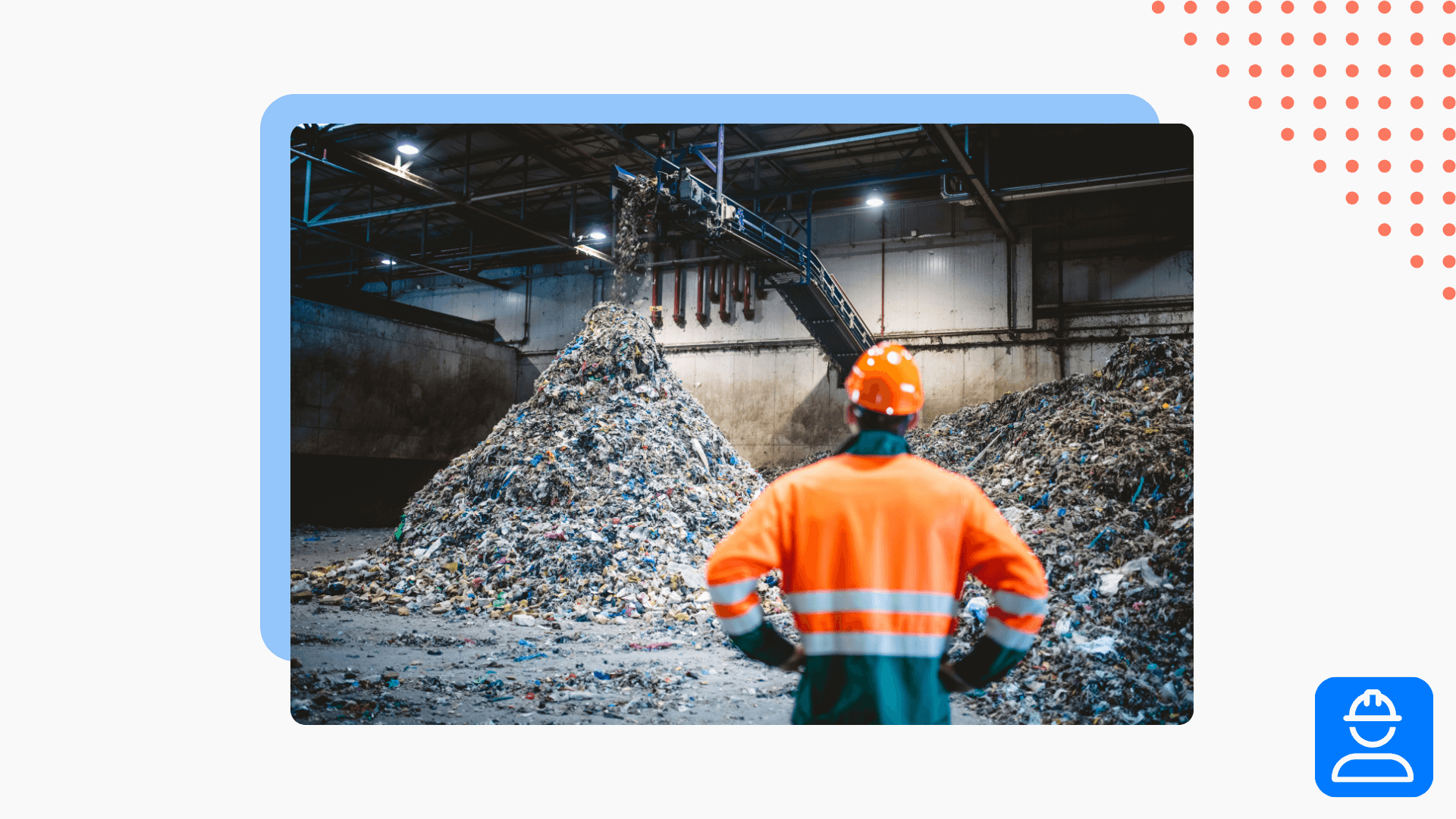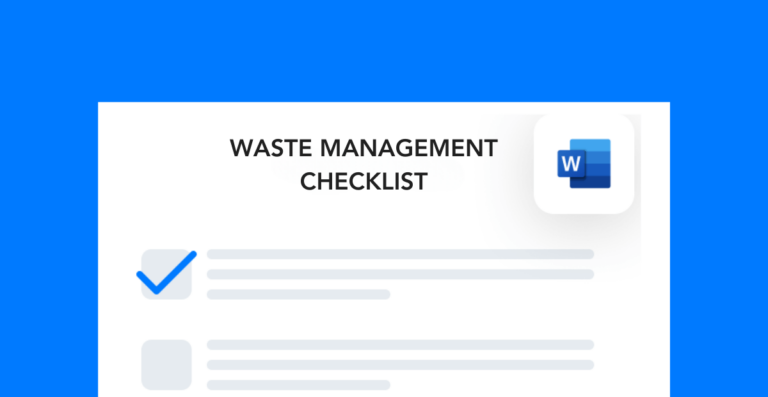Reducing waste spend in the workplace is impossible if you don’t know where it’s coming from. Before you start making changes, properly identify your scrap sources. That way, you won’t end up wasting time on ineffective projects.
In this post, I’ll cover the tops sources of waste in corporate operations and some effective strategies for controlling and reducing them.
Free checklist!
This waste management checklist will walk you through your strategies to find improvement areas.
Top sources of commercial waste spend
The most commons sources of corporate waste vary by industry. Across industries, however, these are the top causes of significant scrap. Go through the list and make note of which types of waste are present in your operations so you can make a plan for reducing them.
Packaging
Product packaging accounts for a significant amount of waste spend, especially in industries where companies have many suppliers.
Some examples of packaging scrap items include:
- Single-use plastic items
- Shipping materials
- Product containers, boxes, etc.
- Storage materials (shrink wrap, pallets, etc.)
Food waste
Specifically in the food industry, food waste is a common problem. A high percentage of this waste comes from processing, where products are assessed for the right size, color, and shape to sell in stores.
Another source of food waste is in corporate areas where companies maybe order food from local businesses and end up ordering too much. This means extra food may end up in the trash if no one is able to use it.
Paper waste
Even though many companies have switched to digital data management solutions, there are still many others who have not made the change.
Paper records like manuals, documents, and reports can pile up quickly. This is one of the biggest opportunities to reduce waste spend in corporate environments.
Electronic waste
The flip side of paper waste is electronic waste. When companies don’t properly organize and manage their devices, it becomes increasingly harder to keep them in rotation.
Examples of e-waste include:
- Cables and cords
- Chargers
- Devices (tablets, phones, computers, etc.)
- Wires
- Hardrives, mouses, and keyboards
In my opinion, this is one of the most overlooked areas of corporate waste spend. It’s difficult to understand the amount of e-waste you have unless you keep a good log of all your devices. This typically requires the IT department to have a solid standard work process for checking components in and out of use.
Energy waste
The last major source of commercial waste worth mentioning is energy usage. Oftentimes, offices and facilities run their utilities on the same level at all times.
This practice, however, means you may be using energy sources when it’s not really necessary. From a budget standpoint, finding ways to reduce your company’s energy rates is an easy way to cut costs without creating quality or safety issues.
Ways to manage and reduce waste spend
Like all areas of organizational performance, there are always improvements you can make. In my experience, reducing waste spend is much easier when you address issues one by one. This, in place of, a sweeping waste reduction strategy that attempts to target all sources at once.
Here are the top ways that I’ve been able to reduce company waste during my career as an EHS professional.
Perform regular waste audits
I would only recommend making process improvements once you’ve done a thorough audit of all the sources in your operation. Perform the audit by walking through each process and making note of the waste output.
Collect data on both the type and amount of waste. That way, you can do a cost analysis and determine which area of the business is the biggest opportunity for reducing waste spend. If you want to have a successful waste reduction strategy, you have to start here.
Tackle waste at the source
When brainstorming how you’ll address waste issues, it’s important to consider whether you’re targeting the source. Any projects and action items should deal directly with the sources you found during your audit.
For example, if your goal is to reduce the amount of packaging waste at your site, you wouldn’t only look at recycling options. Because that strategy doesn’t address the source of the problem: the amount of packaging entering the facility in the first place.
Instead, you might:
- Look for suppliers that use less packaging.
- Consider upgrading to reusable materials (e.g., metal shelving versus wooden pallets).
- Redesign your products so they require less packaging.
Remember: tackle waste spend at the source if you’re looking for long-term results.
Implement a recycling program
Another popular option is to start a recycling program onsite. Like I mentioned before, however, I wouldn’t consider this a full stop strategy. Of course, recycling will keep certain materials out of landfills.
But because not all materials are 100% recyclable, this isn’t an airtight strategy. I would consider a recycling program if you have many materials that can be reprocessed and reused (aluminum, corrugate, etc.).
Adopt energy saving measures
There are two main ways to reduce energy consumption within an organization:
- Switch to more energy efficient systems
- Create a new standard work
The first may cost you money because it involves replacing outdated/less efficient systems with newer technology like LED lights or motion sensors.
The second approach, while less costly, may be trickier to implement. That’s because it relies on human behavior which is not always predictable. Examples of measures to take include having employees turn off machines when not in use or shutting off power sources at certain times of the day.
Educate employees on waste management best practices
The best way to keep a new system going is to get employees onboard. If your workers don’t follow the systems you put into place, you’ll have a hard time reducing your overall waste spend.
I’d recommend teaching your workers not only what the waste reduction strategies are, but also how to spot areas of opportunity. In most (if not all) work environments, frontline workers are the single most important source of information—especially when it comes to improvement measures.
If you teach your team the systems you have in place and equip them to recognize additional areas of waste, you may be able to significantly lower your expenses in this area of the business.





